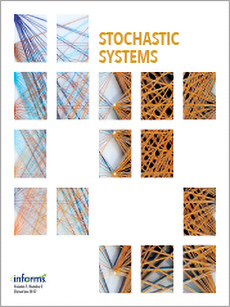Abstract
Under general conditions, the number of customers in a $GI/D/s+GI$ many-server queue at time $t$ converges to a unique stationary distribution as $t\rightarrow\infty$. However, simulations show that the sample paths routinely exhibit nearly periodic behavior over long time intervals when the system is overloaded and $s$ is large, provided that the system does not start in steady state. Moreover, the precise periodic behavior observed depends critically on the initial conditions. We provide insight into the transient behavior by studying the deterministic fluid model, which arises as the many-server heavy-traffic limit. The limiting fluid model also has a unique stationary point, but that stationary point is not approached from any other initial state as $t\rightarrow\infty$. Instead, the fluid model performance approaches one of its uncountably many periodic steady states, depending on the initial conditions. Simulation experiments confirm that the time-dependent performance of the stochastic queueing model is well approximated by the fluid model. Like the fluid model, the behavior of the queueing system can be highly sensitive to the initial conditions over long intervals of time.
Citation
Yunan Liu. Ward Whitt. "Nearly periodic behavior in the overloaded $G/D/s+GI$ queue." Stoch. Syst. 1 (2) 340 - 410, 2011. https://doi.org/10.1214/10-SSY024
Information





